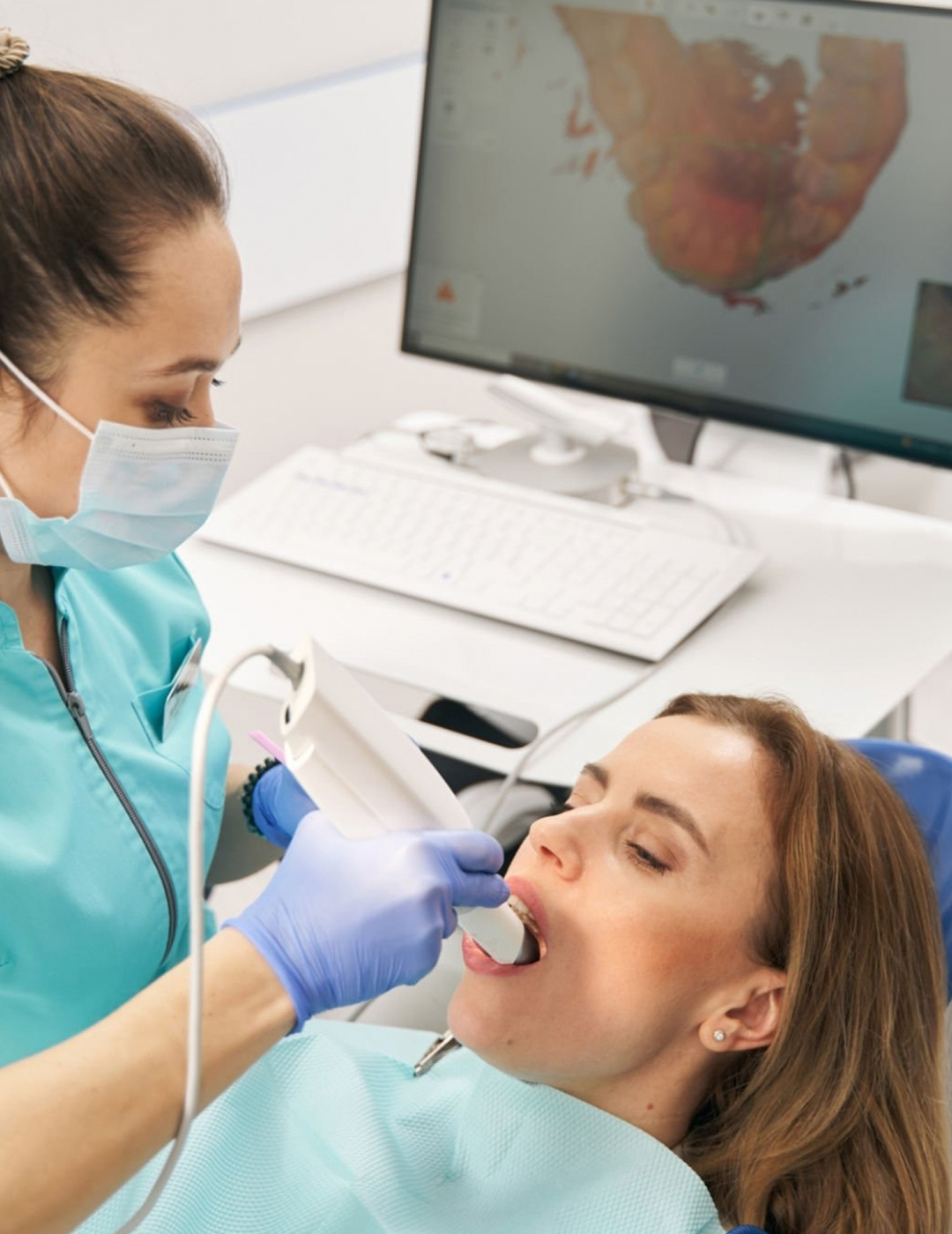Digital impressions – from an orthodontic point of view
Orthodontics is the branch of dentistry that deals with correcting malocclusion (improper alignment of teeth) and improving the appearance of a patient’s smile and occlusion. This is done by using braces, retainers, and dental wires to move teeth into their proper positions.
Over the years, orthodontic treatment has undergone many advancements thanks to technological advances. The latest breakthrough in this field is intraoral scanners. In this blog, we will provide you with an overview of intraoral scanners and how they can help improve orthodontic treatment.

What is an Intraoral scanner?
The intraoral scanner is a digital device that takes 3d images of the inside of your mouth. It is used to produce high-resolution scan of your teeth and surrounding tissue. These scans can be used to diagnose problems, plan restorations, and create 3D models of teeth.
At DerMund Dental Clinic, the latest intraoral scanners can take multiple scans in less than a second and make the treatment process shorter and more efficient.
How is an Intraoral scanner used?
-
Before the scan, the dentist would clean and dry your oral cavity
-
The tip of the scanner is placed in your mouth and moved around to capture a digital 3d image of the teeth.
-
Once the scan is complete, the scanner is removed from the mouth
-
The data is saved and exported for further analysis
Benefits of an intraoral scanner in orthodontic treatment
Increased accuracy in diagnosis and treatment planning
Reduced time spent on taking impressions
More comfortable, as there is no need to have a tray full of impression material in your mouth
Can be used to create three-dimensional models of teeth for use in planning complex treatments
Enhanced communication with patients and dentist
Used to make aligners
Get in touch
Contact us now
Copyright by DerMund 2023. All rights reserved.



